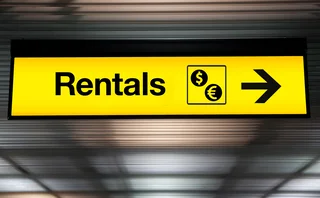
China needs an RMB liquidity absorber – HK might be the answer
Increasing HKMA’s CNH debt issuance could help cement renminbi’s role in financial markets

Surging international use of the renminbi to clear trade payments has not had a supportive impact on the currency. In fact, it has had quite the opposite effect.
Since last year, Russia has adopted RMB for payments with non-Chinese third parties as a means to bypass Western sanctions. Elsewhere, countries such as Saudi Arabia and Brazil have also agreed to begin using the redback to clear payments for their oil and agricultural product trades with China.
But despite the growing number of sovereign entities and other institutions using RMB as a settlement currency, the redback still has a long way to go to become a genuine store of value.
Overseas, it exists mainly in the form of interbank liquidity, not in the form of bank deposits. And herein lies a problem for the People’s Bank of China – as well as an opportunity for Hong Kong and its de-facto central bank.
Institutions receiving RMB from Chinese counterparties currently have a dearth of options to deploy it in ways that recycle it back to the RMB market. More often than not, it will end up being converted to other currencies. That effectively creates a supply of RMB offshore that can result in some short-term depreciation pressures on the currency. So, even amid its growing adoption internationally this past year, the yuan has – ironically – been one of Asia’s worst performing currencies over the same period.
A stronger, deeper offshore investment market through which RMB overseas can be invested in offshore RMB assets is also needed
International investment in China’s onshore bond market has been growing rapidly in recent years through the Bond Connect and the China Interbank Bond Market (CIBM Direct) schemes. And the launch of Swap Connect, which offers international investors better tools to hedge RMB interest rate risks, is expected to further bolster growth in onshore investment.
But a stronger, deeper offshore investment market through which RMB overseas can be invested in offshore RMB (CNH) assets is also needed.
For while a growing number of institutions – from sovereign wealth funds to corporates – are using RMB, there remains some cautiousness around China’s onshore market, given the current frictions between the West and China. Many institutions still prefer to stay offshore.
The Hong Kong Monetary Authority has issued offshore renminbi (CNH) denominated debt on an irregular basis in recent years. A three-year CNH note here, a five-year note there. Yet banks report that the book demand on some of the HKMA’s recent CNH issuances have been multiple times what was being targeted.
Perhaps a regular schedule of CNH issuances, akin to the HKMA’s own Exchange Fund Bills & Notes Programme, could soak up all that additional, growing demand for triple-A-rated CNH assets.
Building a liquid benchmark yield curve through such an initiative could boost the development of the CNH bond market. And it would also better support China’s currency by helping in the recycling of RMB deposits accumulating overseas back into RMB assets – playing the same role US Treasuries do in the Eurodollar market. The HKMA’s issuances would become China’s offshore liquidity absorber.
The HKMA may not have a pressing financial need to ramp up issuances of CNH debt right now. Despite budget deficits in the past two years, it continues to maintain a very sizeable residual surplus.
But if Hong Kong wants to cement its position as the dominant offshore RMB centre at a time when international RMB use is growing rapidly, this is certainly something worthy of consideration.
Only users who have a paid subscription or are part of a corporate subscription are able to print or copy content.
To access these options, along with all other subscription benefits, please contact customer services - www.fx-markets.com/static/contact-us, or view our subscription options here: https://subscriptions.fx-markets.com/subscribe
You are currently unable to print this content. Please contact customer services - www.fx-markets.com/static/contact-us to find out more.
You are currently unable to copy this content. Please contact info@fx-markets.com to find out more.
Copyright Infopro Digital Limited. All rights reserved.
As outlined in our terms and conditions, https://www.infopro-digital.com/terms-and-conditions/subscriptions/ (point 2.4), printing is limited to a single copy.
If you would like to purchase additional rights please email info@fx-markets.com
Copyright Infopro Digital Limited. All rights reserved.
You may share this content using our article tools. As outlined in our terms and conditions, https://www.infopro-digital.com/terms-and-conditions/subscriptions/ (clause 2.4), an Authorised User may only make one copy of the materials for their own personal use. You must also comply with the restrictions in clause 2.5.
If you would like to purchase additional rights please email info@fx-markets.com
More on Our take
FX traders revel in March Madness
Chaotic Trump policies finally bring diversity to flows – to the delight of market-makers
Could LPs explore renting out their client franchise?
Connecting regional banks with sophisticated clients may see dealers evolve to become liquidity distribution hubs
Higher rates see corporates reassess FX structured products
Treasurers are getting a taste for dual currency notes and structured forwards
Quants dive into FX fixing windows debate
Longer fixing windows benefit clients, but predicting how dealers will respond is tough
Low FX vol regime fuels exotics expansion
Interest is growing in the products as a way to squeeze juice out of a flat market
BofA quants propose new model for when to hold, when to sell
Closed-form formula helps market-makers optimise exit strategies
FX forwards dealers face added challenges in P&L analysis
Mark-out tools for forwards and swaps trading may not be a panacea
What T+1 risk? Dealers shake off FX concerns
Predictions of increased settlement risk and later-in-the-day trading have yet to materialise








